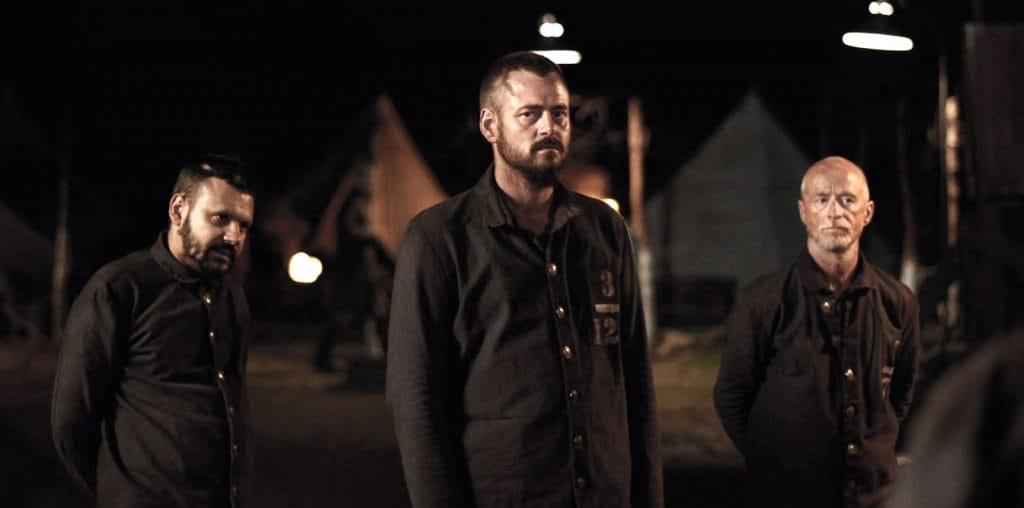
John Bush’s “Vajra Sky Over Tibet” has been traveling the art house circuit under the proverbial radar, which is a major shame since it is not only the year’s best documentary, but it is also among the finest films ever made about religion. The faith in question is Vajrayana, the Tibetan form of Buddhism. Vajra is Sanskrit for “thunderbolt of awakening” and “Vajra Sky Over Tibet” is a thunderbolt in its own right.
Traveling through Chinese-occupied Tibet with only a local guide and driver, Bush quietly captured the most remarkable portrait of that Himalayan land imaginable. In a way, this may be the last hope to see Tibet before it is permanently asphyxiated by the Communist Chinese authorities, who are slowly turning this ancient land from a vibrant and distinctive culture into a massive Chinese-operated museum.
Bush chose not to interview any local people for his film, fearing reprisals by the Chinese government for anyone who speaks out against the occupation. He also kept his camera away from the Chinese occupation force (except for a brief and funny shot of two sloppily dressed soldiers enjoying a cigarette break).
What Bush focused on, however, is the remains of Tibet’s Buddhist cultural heritage. The fact any of it survives is miraculous, given the genocide enacted against the Tibetan people by the Chinese and the wreckage of the holy shrines during the chaos of the Cultural Revolution. The temples and palaces that survive overcame years of desecration (with sacred sites used for storing pigs or grain) and subsequent years of haphazard restoration (some statues of the Buddha were repainted in hideous and inappropriately garish hues).
But the will and faith of the Tibetan people was not destroyed by the Chinese, and “Vajra Sky Over Tibet” brilliantly shows how both the surviving monastic orders and the general population did not jettison their religion. Sequences showing people coming to prayer and celebrating religious festivals provide an extraordinary view of quiet, sincere and genuinely humble allegiance to a power greater than the Chinese military. Even the Chinese who’ve been relocated by the Beijing regime to Tibet in an effort to outnumber the Tibetan population have been caught up in this (the Communists banned Buddhism after their 1949 takeover).
But the display of faith is tempered with an uncertainty of the future. The challenge of the Dalai Lama, who has been in exile since 1959, hovers throughout the land. Even though his photograph is banned and his palaces (the Potala and Norbulinka) remain empty, his significance is only further enhanced by his continued absence. It is widely believed the Chinese government will attempt to pick its own choice as successor to the Dalai Lama after the holy man passes away, much as they did with the successor to the Panchen Lama (the child chosen by the Dalai Lama’s representatives to succeed the last Panchen Lama is believed to be imprisoned in Beijing). Nor will the Chinese government allow new generations of teachers to pass along the Buddhist principles to tomorrow’s students. This, of course, will seriously weaken the pursuit of Buddhist education, and it is not hard to imagine the Communist authorities plant their own teachers in place to fill that void.
While the vision of a culture threatened with extinction is harrowing, “Vajra Sky Over Tibet” is actually a life-affirming celebration. The film carefully and succinctly summarizes the basic tenets of Tibetan Buddhism through the use of art, architectures, and the surviving monasteries and nunneries that keep the religion alive. What emerges is a religion that is both serene and complex, and for those unfamiliar with the subject it provides a brilliant introduction.
Equally brilliant is the production itself. Bush’s cinematography represents the finest use of digital videography to play on a big screen. The richness of the Tibetan colors and the deep texture of the rugged Himalayas are awe-inspiring. Mirrored to the visual experience is David Hykes’ magnificent Harmonic Chant score, whose hypnotic and inventive melodies echo the resilience of the Tibetan culture.
“Vajra Sky Over Tibet” is the third part of Bush’s “Yatra Trilogy.” I am not familiar with the earlier segments, “Dharma River” and “Prajna Earth,” but not seeing them may not be a sin. “Vajra Sky Over Tibet” stands in its own right as a work of power and glory. By all means, seek this one out.

I really like the movie very much.The Tibetan have been suffering very much.It is quite injustice for them.They must get back their country.